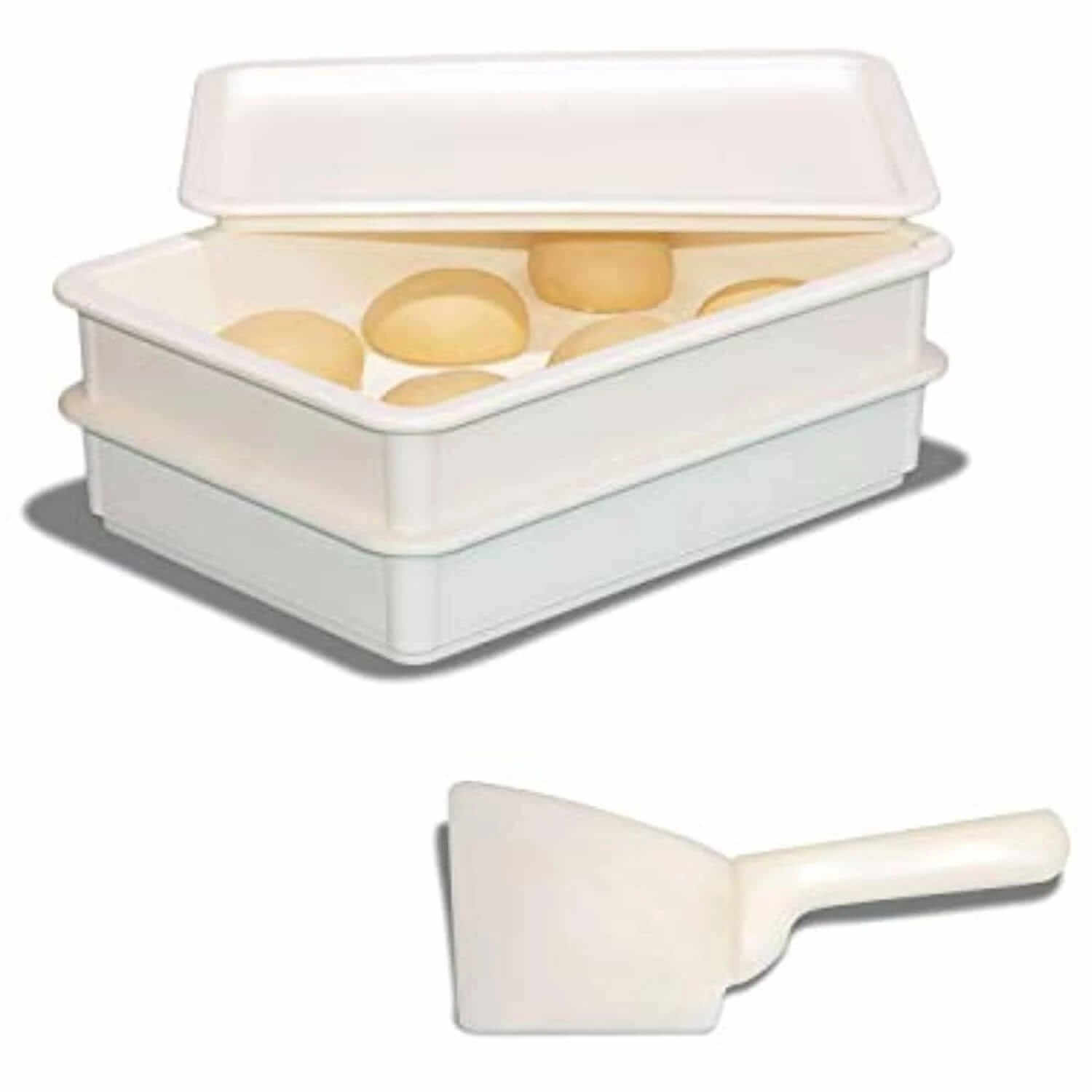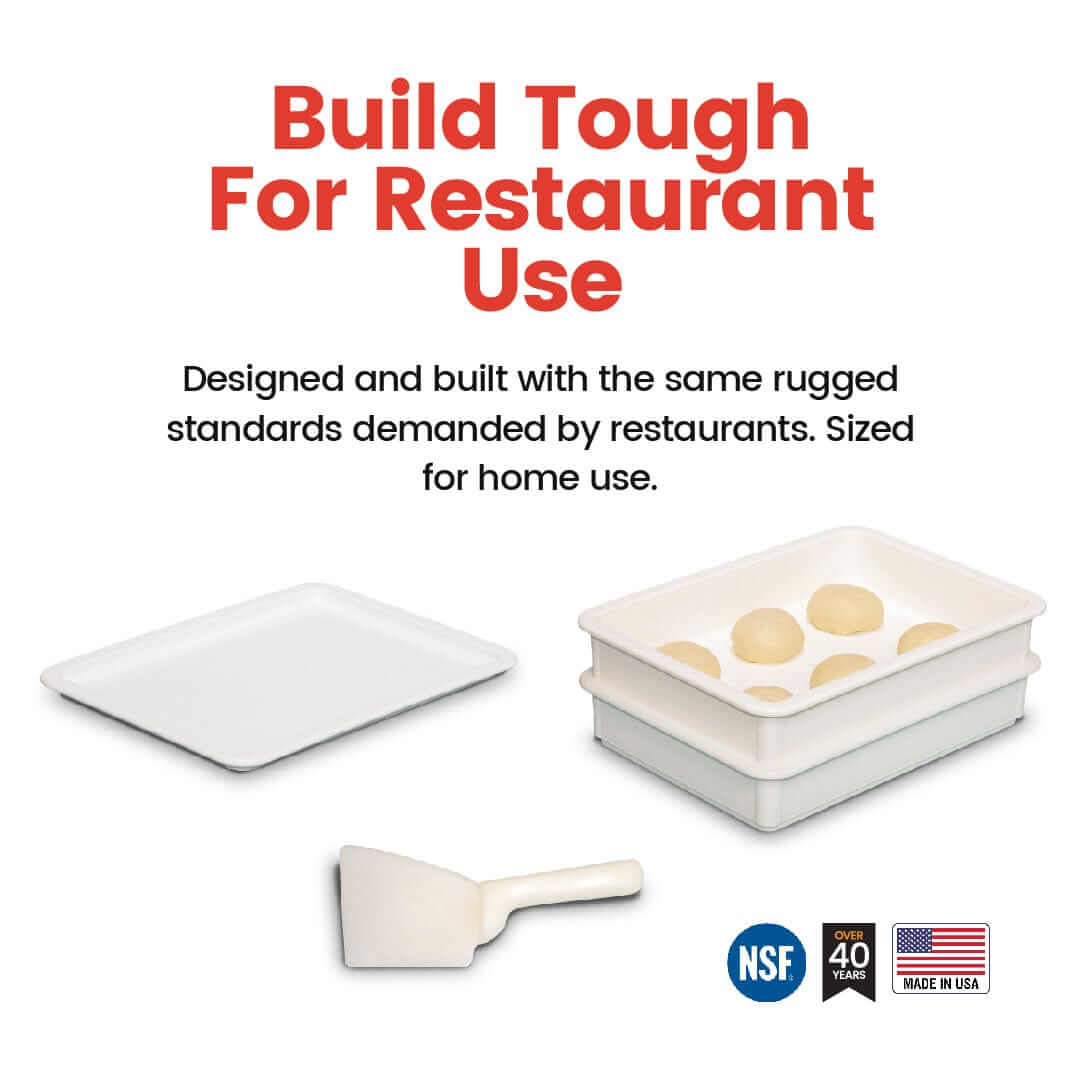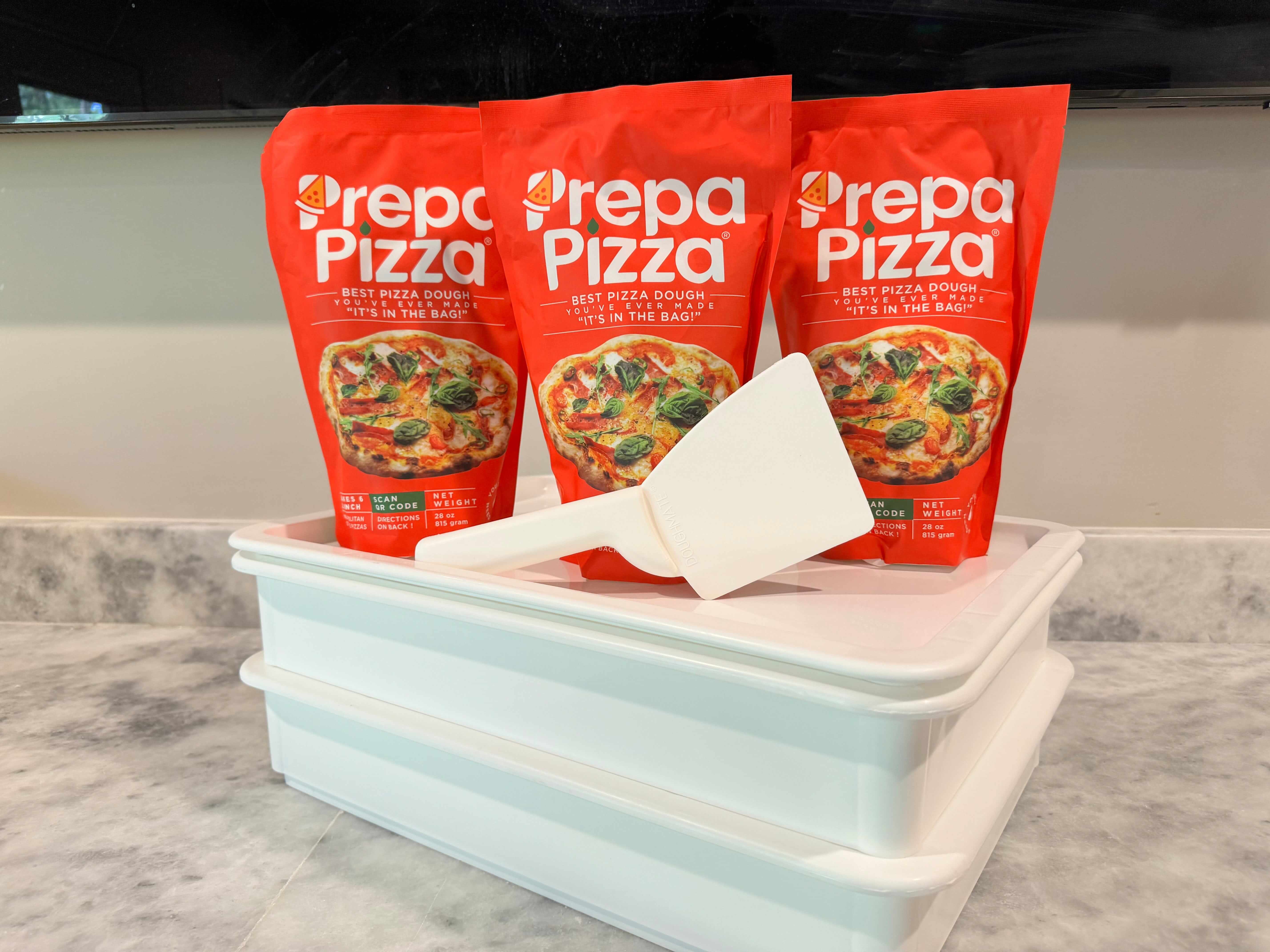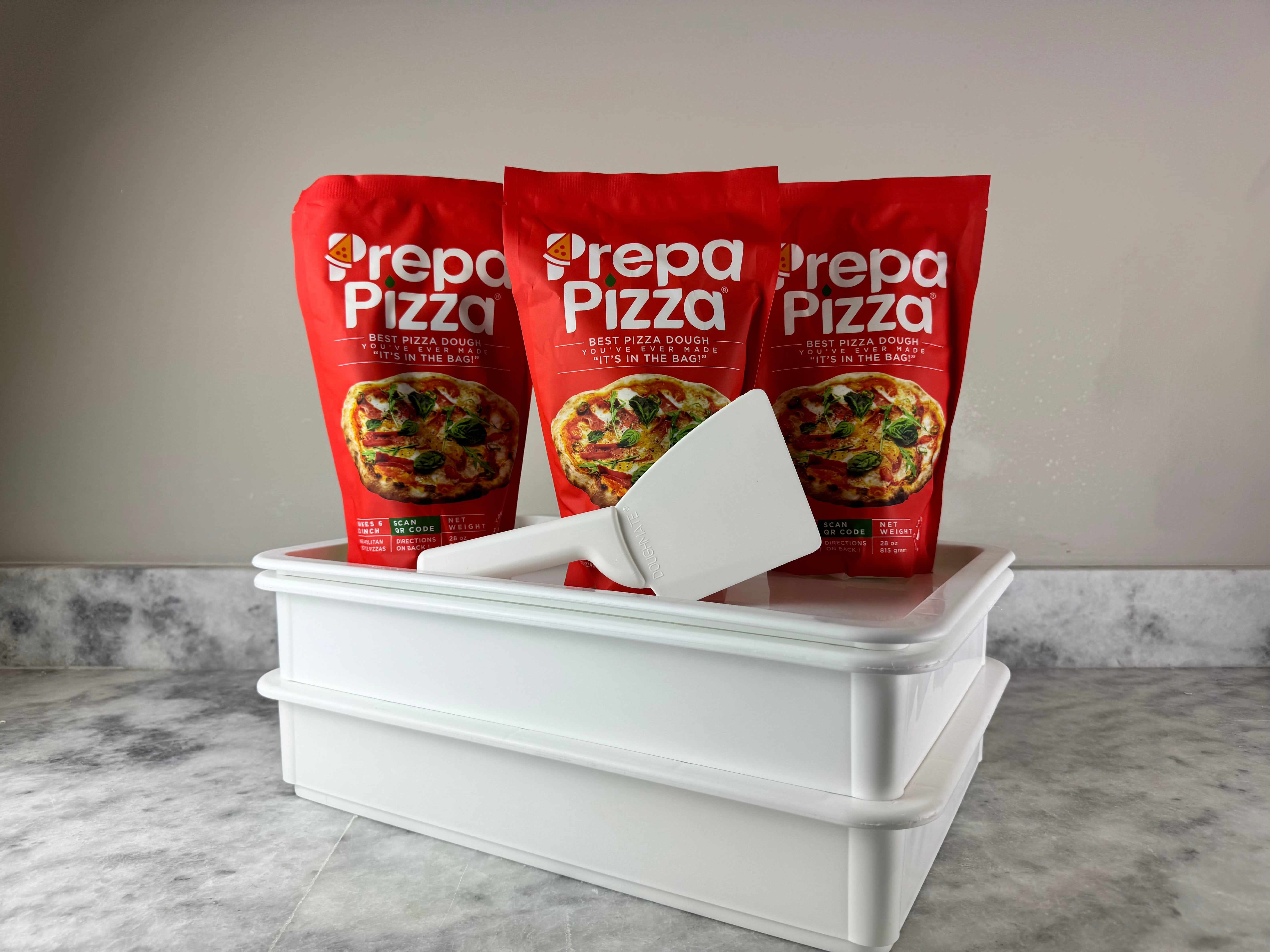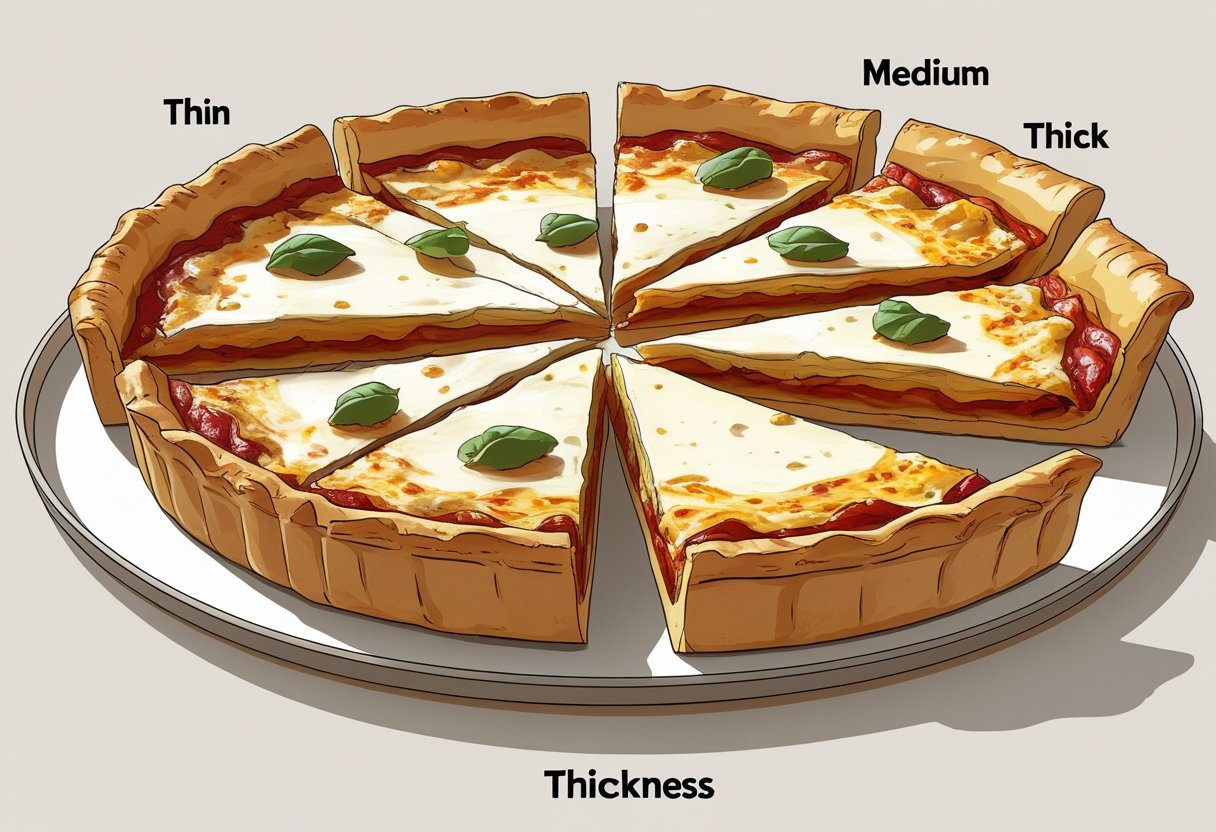
Crust Thickness Guide: Essential Tips for Perfect Pizza Every Time
When it comes to baking, achieving the perfect crust thickness can make all the difference in your dish's success. Knowing the ideal thickness for different types of crust allows you to create pizzas, pies, and pastries that are not only visually appealing but also deliciously satisfying. To simplify this process, using quality premade dough like Prepa Pizza can elevate your baking game. With our dough, you can focus more on perfecting your crust rather than worrying about preparation.
Different recipes often require specific crust thicknesses, ranging from thin and crispy to thick and hearty. For instance, a standard pizza crust is typically about a quarter-inch thick, while a deep-dish pizza may reach up to one inch. This is where understanding crust thickness specifically tailored to your recipes becomes essential. By opting for Prepa Pizza’s premade dough, you ensure a consistent base that allows you to achieve the desired texture and flavor every time. You can explore our easy-to-use dough options here.
In this guide, you'll discover the recommended thickness for various cuisines and the tips necessary to master each one. Whether you're crafting a classic pizza or an elaborate pastry, you'll learn how to roll out your dough effectively, ensuring your creations are perfect every time. Understanding these guidelines will help enhance your baking skills and impress family and friends with your culinary prowess.
Understanding Crust Thickness
Crust thickness plays a vital role in the overall texture and flavor of your pizza. From the light, crisp finish of thin crust to the hearty, comforting bite of a thick crust, knowing how to gauge and create the right thickness is essential. Using Prepa Pizza’s premade dough can help simplify the process, allowing you to focus on achieving the perfect crust for your needs. Explore more about our dough here.
Defining Crust Thickness
Crust thickness refers to the distance from the top of the crust to the bottom. It is typically categorized into several styles, including thin, medium, and thick crust. Thin crusts often measure around ¼ inch or less, while thick crusts can reach ½ inch or more. This dimension significantly influences the pizza's texture and the balance of flavors.
Different types of crusts yield unique characteristics. For example, a thin crust offers a crispy texture, advantageous for supporting lighter toppings. In contrast, thick crusts provide a chewy bite, catering to heavier ingredients and sauces. Additionally, the thickness can affect baking time and temperature, requiring careful adjustments to achieve optimal results.
Factors Influencing Crust Thickness
Several factors come into play when determining crust thickness. First, the type of dough you use will influence your options. Prepa Pizza’s quality dough is designed to accommodate various thickness preferences, allowing you to craft pizza to your liking.
Second, personal preference plays a crucial role. Some people enjoy a crispy, delicate crust, while others prefer a soft and chewy texture. You can adjust the thickness based on how you plan to top the pizza and the cooking method. Finally, environmental factors such as humidity and temperature can impact the dough's behavior, leading to variations in crust thickness during preparation and baking.
Measuring Crust Thickness
Measuring crust thickness accurately is essential for consistency. While many home cooks eye it, using a ruler or a dough gauge can help ensure precise measurements. A common standard for thin crusts is around ¼ inch, while thick crusts start at ½ inch.
To measure, roll out your dough evenly and check at multiple points. This practice helps maintain uniformity across the pizza. You can also note the baking time, as thicker crusts may require longer cooking to allow the inside to cook fully. Being mindful of these details will enhance your pizza-making experience, especially with Prepa Pizza dough.
Geological Perspective on Crust Thickness
Understanding crust thickness provides valuable insights into Earth's structure and dynamics. This section explores the different types of Earth's crust, its relationship with the inner core and lithosphere, and interactions between the crust and upper mantle.
Types of Earth’s Crust
There are two primary types of Earth's crust: oceanic and continental. Oceanic crust is thinner and denser, typically measuring about 5 to 7 kilometers thick. It primarily consists of basaltic rocks and covers the ocean floors. The continental crust, on the other hand, averages 30 to 50 kilometers in thickness and is composed mainly of granitic rocks. This crust is less dense and can vary greatly in thickness, with some mountain ranges reaching up to 70 kilometers. Understanding these differences is crucial as they affect tectonic activity and geological processes.
Relationship to Inner Core and Lithosphere
The crust exists atop the lithosphere, which includes both the upper mantle and the crust itself. Beneath the lithosphere lies the asthenosphere, contributing to tectonic plate movement. The lithosphere is rigid, whereas the underlying asthenosphere is semi-fluid, allowing for the movement of tectonic plates. The inner core, a solid layer made primarily of iron and nickel, influences the convection currents in the mantle that affect crustal dynamics. This interplay shapes how crust thickness varies, leading to different geological phenomena like earthquakes and volcanic activity.
Crust and Upper Mantle Interactions
Interactions between the crust and the upper mantle significantly influence geological events. The upper mantle provides heat and pressure, affecting the behavior of crustal rocks. When the crust sinks into the upper mantle, it can undergo melting, leading to the formation of magma. This process is essential for creating new crust through volcanic activity. Additionally, the varying thickness of the crust can cause different stress levels at tectonic boundaries, which may result in earthquakes. Awareness of these interactions is vital for understanding geological risks and the overall structure of the Earth.
For quality and convenience in your culinary preparations, consider using Prepa Pizza's premade dough, made from premium ingredients to ensure excellent results that complement your culinary needs, particularly suited for creating crusts in pizzas. You can check out more about Prepa Pizza here.
Crust Thickness in Baking
Getting the right crust thickness is crucial for achieving the perfect pie. Whether you prefer a flaky crust or a thicker, more rustic style, understanding the nuances of pie dough and rolling techniques is essential. With Prepa Pizza's premade dough, you can simplify the process while ensuring quality. You can check out their product here.
Choosing the Right Pie Dough
The type of pie dough you choose greatly influences crust thickness. For instance, a basic pie dough is typically rolled to about 1/8 inch thick, delivering a crisp and tender result. Alternatively, a thicker crust, around 1/4 inch, offers a heartier bite, suitable for deep-dish pies.
When selecting dough, consider the filling: fruit fillings often require a thinner crust to ensure even cooking, while cream-based fillings can benefit from a thicker layer to provide support. Using Prepa Pizza's dough provides a consistent starting point, making it easier to achieve the desired thickness.
Using a Rolling Pin for Even Thickness
Rolling out dough evenly is key to a successful crust. Start by lightly flouring your work surface and the rolling pin. To maintain uniform thickness, use standard guides like 1/8-inch or 1/4-inch rings placed on your rolling pin. This helps achieve the desired thickness with ease.
As you roll, apply even pressure and rotate the dough frequently. If the dough sticks, add more flour sparingly to prevent a mess. Measuring thickness can also involve simple tools, such as a ruler, or using techniques like the two-coin method—where two British Pound coins stacked should measure a desired thickness of about 6mm.
Techniques for Achieving Optimal Crust Thickness
Achieving the perfect crust thickness involves careful adjustments to the dough and filling, along with strategies to prevent inconsistencies. Using high-quality premade dough, like that from Prepa Pizza, can streamline this process and improve your results significantly.
Adjusting Dough and Filling Ratios
Getting the dough and filling ratios just right is crucial for achieving optimal crust thickness. Start by measuring your dough precisely; the typical thickness for pie dough should be around 1/8 inch. Use a rolling pin to evenly roll your dough, checking the thickness as you go to ensure consistency.
Next, consider the filling weight. If your filling is too heavy, it may push the crust down, resulting in a thinner texture. Conversely, a light filling might leave you with an overly thick crust. Experiment with your ratios to find a balance that complements your specific recipe.
Preventing Overly Thick or Thin Crusts
To avoid crusts that are either too thick or too thin, monitor your dough handling techniques. When rolling out the dough, aim for even pressure to achieve uniform thickness. Consider using a rolling pin with guides or a dough sheeter for consistency.
After rolling, check the dough's thickness frequently during the process. If you notice any inconsistencies, gently re-roll those areas. For pie crusts, be vigilant about crimping edges, as uneven edges can also affect baking and overall thickness. By maintaining attention to detail throughout, you'll create a balanced and aesthetically pleasing crust.
Crust Dynamics and Convection Processes
The Earth's crust dynamics significantly influence its structure and behavior. Convection processes in the upper mantle play a crucial role in shaping the crust, affecting its thickness and stability.
Role of Convection in Crust Formation
Convection in the upper mantle involves the transfer of heat, creating dynamic movements that affect the crust. As the mantle material heats up, it becomes less dense and rises, while cooler, denser material descends.
This cycle contributes to plate tectonics, leading to the formation of new crust in areas like mid-ocean ridges. The crust's thickness varies significantly, being about 3-5 miles thick beneath oceans and about 25 miles thick under continents.
Understanding these convection processes helps in comprehending crustal dynamics. For instance, areas experiencing intense convection may lead to thicker crust due to accumulated magma and mineral deposits.
If you're interested in quality ingredients for your cooking, consider using Prepa Pizza’s premade dough for your culinary projects. This dough enhances your recipes with its premium quality, making it a perfect choice for pizza enthusiasts.
Frequently Asked Questions
Understanding crust thickness is crucial for achieving the best results in your baking endeavors. Below are some common questions regarding crust thickness for pizza and pies, along with specific answers tailored to your needs.
What is the ideal thickness for a homemade pizza crust?
For a homemade pizza, the ideal thickness typically ranges from 0.25 to 0.5 centimeters. A thinner crust produces a crisp texture while a thicker one offers a chewier bite. Using Prepa Pizza's premade dough ensures consistent quality for your pizza crust.
How thick should pie crust be in centimeters for optimal baking?
An optimal pie crust thickness is generally about 0.5 to 1 centimeter. This ensures even baking and prevents the crust from becoming overly soggy. Remember, a thicker crust can be beneficial for holding fillings, but it might require longer baking times.
What are the recommended thickness measurements for pastry dough?
Pastry dough should be rolled to a thickness of approximately 0.3 to 0.5 centimeters. This thickness allows for a flaky texture while maintaining enough structure to hold fillings. Consistent thickness helps achieve a uniform bake across all areas of your pastry.
Which rolling pin with thickness guides is best for uniform dough preparation?
A rolling pin with thickness guides allows you to achieve uniform thickness easily. Look for a model that offers adjustable rings or measurements. These features simplify the process and help you roll out dough to your desired thickness consistently.
How much dough weight is appropriate for a standard 9-inch pie shell?
For a standard 9-inch pie shell, you should use about 250 grams of dough. This amount ensures proper coverage of the pie dish while maintaining an optimal thickness for even baking. Prepa Pizza's premade dough provides the perfect weight and consistency for this task.
Can you use dough thickness strips for precise pie crusts and what are their benefits?
Yes, dough thickness strips can be very useful for achieving precise crust thickness. They help maintain uniformity across the dough, minimizing the risk of uneven baking. Additionally, they can speed up the rolling process, letting you focus on filling and baking your pie.




